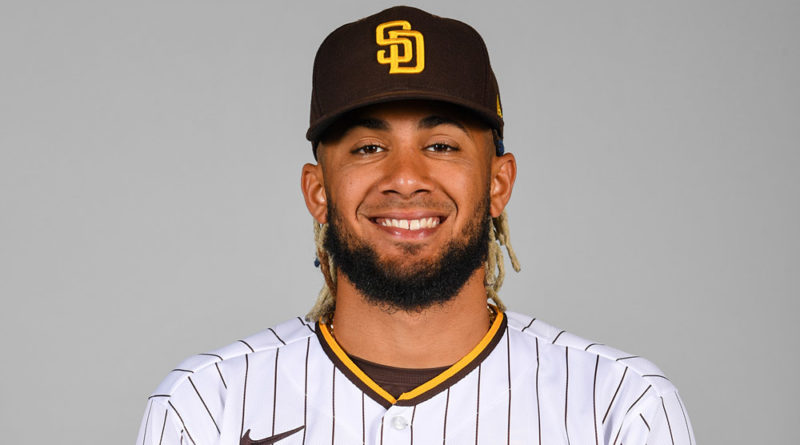As we continue to get you ready for your upcoming fantasy baseball drafts and the season itself, I wanted to take a look at a couple of more draft strategies after revealing three in part one of our draft guide. Laying out different draft strategies helps determine the players you will specifically be targeting and allows you to easily adjust throughout a draft.
POSITIONAL TIERS:
In case you aren’t familiar with positional tiers, it simply means ranking players by position who you think will put up similar value, and it helps avoid drafting players based on their overall rankings. The elite players at their position go in the first tier, the next level in the second tier, etc.
Some positions may have five elite guys in the first tier, and others may have two. Some positions may have a strong second tier, while others are deep and have three tiers of players who make sense to draft. Instead of targeting a certain player, target a certain tier.
Fantasy owners get so caught up in drafting a player based on their average draft position, they lose sight that they could fill that position later with another player who could give you similar value.
As mentioned in part one of the draft guide, shortstop is a position we want to be invested in. I believe the top two tiers easily cover the top 12 at the position in Fantasy Pros average draft position. Again, we need to know what site we are playing on as some position eligibility differs, but if fantasy owners target this position, they should be in good shape.
Third base is top heavy but extremely deep. If fantasy owners don’t draft a player like Manny Machado of the San Diego Padres, there’s nothing wrong with grabbing Rafael Devers of the Boston Red Sox two rounds later.
Deciding which players fall into each tier is the responsibility of the fantasy owner. Also, when to draft that position falls on the fantasy owner. This is why we love playing fantasy sports. Usually, if you put in the work, you will be rewarded at season’s end.
In summary, don’t let the average draft position be the only resource you use. If drafting solely on player rankings and not positional rankings, it’s more likely than not that you’re going to reach on a position you probably could have drafted later and gotten similar value from a player you drafted a couple of rounds earlier.
WINS, STOLEN BASES AND SAVES:
Major League Baseball is changing, but fantasy baseball has yet to adjust. This impacts how we draft.
In 2020, starting pitchers didn’t average five innings a start. Think about that. In order to earn a win, a starting pitcher must pitch five innings. In order to qualify for a quality start which is a popular category, pitchers must throw six innings and allow three earned runs or fewer. Both of those categories were extremely hard to reach in 2020.
This does make sense and was an outcome we stressed last year due to the long layoff. However, this is a trend that has happened in recent years with more teams using their bullpen. Due to the shortened season last year, teams won’t let their starters pitch a lot of innings early in the season, so 2021 looks to be more of the same.
As a result, the thought process is to draft one of the studs early. Six starting pitchers are being drafted within the top 20 overall. However, I will continue to recommend the strategy of waiting on starting pitchers and finding value later.
We have spotlighted the lack of stolen bases in the last few draft guides and for good reason. Teams aren’t running anymore. The last time a team averaged one stolen base per game was 2016.
I hate recommending chasing categories, but this is one that we need to. This is why premium players like Fernando Tatis Jr., Mookie Betts and Ronald Acuna are at the top of the draft. They are still running while also helping in other categories. If fantasy owners find themselves behind the stolen base category during their draft, they may need to reach on players later in the draft to catch up. This will also be crucial during the season when targeting players on the waiver wire.
As for saves, this is always a category we chase on the waiver wire as the position is extremely volatile. Teams aren’t relying on one pitcher to close out the ninth anymore. There were 67 pitchers who recorded at least one save in the shortened 2020 season. In 2018 and 2019, only 11 pitchers in each season recorded 30 saves or more. There were only four pitchers who reached that total in both seasons.
Our strategy has stayed the same in recent years as we recognized this trend early. There’s no need to reach, but we would like to draft a closer on a good team who has his role solidified. If we can come out with two closers, then that is a strong start and we will target the category on the waiver wire throughout the season.
I spotlight these categories because it does impact how we draft, but also the bigger discussion of what fantasy baseball should do.
I’m all for getting rid of wins or the quality starts category and adding another pitching category like strikeouts per nine innings. Steals would be hard to get rid of, but could add another offensive category to help mitigate the lack of steals like on base percentage plus slugging percentage (OPS). As for saves, this is a category that should be gone. Fantasy owners should expand and add holds plus saves to expand the player pool for targeting that category.

